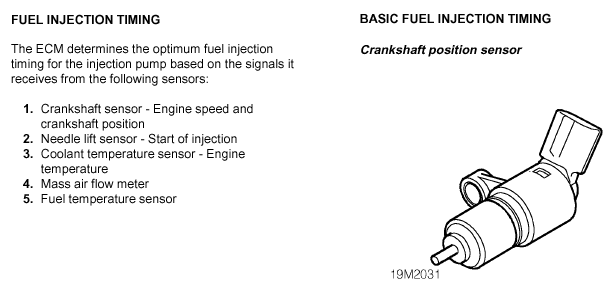

|
The speed and position of the engine is detected by the crankshaft sensor
which is bolted to, and projects through, the gearbox adapter plate adjacent to
the flywheel. The crankshaft sensor is an inductive sensor consisting of a bracket mounted body containing a coil and a permanent magnet which provides a magnetic field. The sensor is situated such that an air gap exists between it and the flywheel. Air gap distance is critical for correct operation. The flywheel has four poles positioned equally around the crankshaft circumference at 90 degree intervals. When the flywheel rotates, as a pole passes the sensor it disturbs the magnetic field inducing a voltage pulse in the coil. This pulse is transmitted to the ECM. Four pulses are transmitted to the ECM for each revolution of the flywheel. By calculating the number of pulses that occur within a given time, the ECM can determine the engine speed. The output from this sensor when used in conjunction with that from the needle lift sensor is used for idle stabilisation and reference for injection timing. |